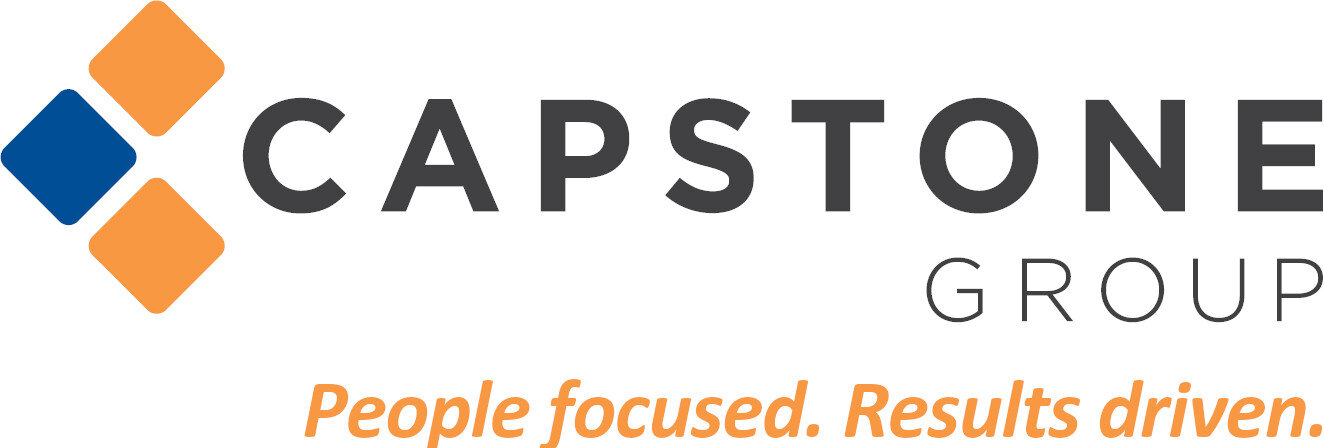Insurance acts as a financial safety net against unexpected expenses, with deductibles being the out-of-pocket amount paid before coverage starts. Opting for higher deductibles can lead to lower premiums, customized risk management, fewer small claims, long-term savings, and encourages proactive risk mitigation, making it a financially sound choice for many policyholders.
Expert Advice: Considerations When Quoting Your Personal Insurance Policies
Admitted vs. Non-Admitted Insurance Carriers
In the wake of the collapse of Silicon Valley Bank, the Federal Deposit Insurance Corporation (FDIC) has been brought to the spotlight. The FDIC provides certain levels of insurance for depositors in case their bank fails, becomes insolvent, or goes out of business.
Over the last few days, our Capstone Team has fielded questions regarding similar scenarios in which insurance companies fail or become insolvent, and protections or backstops that might be available to insureds in those situations. Those questions lead to an important distinction between: Admitted vs. Non-Admitted insurance carriers.
Admitted Insurance Carriers
Admitted insurance carriers are insurance companies that are licensed by the state government to sell insurance within the state. They are required to comply with state regulations and file their rates with the state's insurance department. Admitted carriers must also participate in state insurance guaranty funds, which provide coverage and steps in the pay claims in the event the insurance company becomes insolvent; similar to the FDIC insurance we’ve been hearing about recently.
Advantages of Admitted Insurance Carriers:
Regulated by the state: Admitted carriers must comply with state regulations, ensuring that they follow fair and consistent underwriting practices.
Participation in insurance guaranty funds: Admitted carriers participate in state insurance guaranty funds, which provide protection to policyholders in the event the carrier becomes insolvent.
Higher level of consumer protection: Admitted carriers must comply with state regulations, providing an additional layer of protection to policyholders.
Disadvantages of Admitted Insurance Carriers:
Limited flexibility: Admitted carriers must comply with state regulations, which can limit their ability to tailor policies to meet specific needs.
Limited availability: Admitted carriers are only licensed to operate within specific states, which can limit policy options for businesses with multi-state operations.
Non-Admitted Insurance Carriers
Non-admitted insurance carriers are insurance companies that are not licensed by the state government to sell insurance within the state. They do not have to comply with state regulations and do not participate in state insurance guaranty funds.
Advantages of Non-Admitted Insurance Carriers:
Greater flexibility: Non-admitted carriers are not subject to state regulations, allowing them to offer more flexible policies to meet specific needs.
Broader coverage options: Non-admitted carriers are not limited to state-specific regulations, allowing them to offer coverage in multiple states.
Disadvantages of Non-Admitted Insurance Carriers:
Lower level of consumer protection: Non-admitted carriers are not subject to state regulations, providing less protection to policyholders.
Higher risk: Non-admitted carriers are not required to participate in state insurance guaranty funds, increasing the risk of financial loss in the event the carrier becomes insolvent.
More expensive: Non-admitted carriers may charge higher premiums due to their increased risk exposure and lack of state oversight.
Which Option is Right for You?
Most businesses carry several different types of commercial insurance policies. Some policies may be through an admitted carrier, others may be placed through non-admitted carriers it’s not a “all or none” situation. Deciding between an admitted or non-admitted insurance carrier will depend on a variety of factors, including the types of coverage needed, the specific needs of the business & industry in which you operate, and the organizations’ level of risk tolerance. For businesses that require coverage in multiple states or have unique or higher-hazard operations, a non-admitted carrier may offer greater flexibility. However, for businesses that prioritize consumer protection and the assurances of the state guarantee fund, an admitted carrier may be the better option.
In conclusion, admitted and non-admitted insurance carriers offer distinct advantages and disadvantages. The correct direction differs on a case-by-case, and even a policy-by-policy basis. It's essential to work closely with your trusted insurance & risk management advisor to carefully evaluate the specific needs of the business and level of risk tolerance, and understand the options available to you, before selecting an insurance carrier for all lines of coverage.
2023 Property & Casualty Market Outlook
Introduction
Since 2019, the commercial insurance industry has been grappling with a hardening marketplace, one characterized by increased premiums, stringent underwriting criteria, restricted terms of coverage and less competition amongst insurance carriers. This was caused by a combination of increased claim frequency and severity, increasing jury awards in liability cases, lasting complications created by the COVID-19 pandemic, evolving cyber security threats and natural catastrophes causing large-scale property damage.
Trends to Watch
As we enter 2023, developing trends such as labor shortages, supply chain disruptions, and inflation issues will continue to have a direct impact on insurance buyers. However, for the first time in three years we are seeing such volatile industry conditions begin to stabilize for organizations with above-average risk profiles or exposures. When looking ahead, there are some notable trends that are impacting insurance buyers across many industries.
Labor Shortages – Labor shortages continue to present challenges for employers, impacting businesses of all industries and sizes. A recent survey conducted by Provident Bank identified that 75% of businesses have been affected by current worker shortages. To help combat various workforce movements, many employers have adjusted their hiring and retention strategies.
Supply Chain Disruptions – While most businesses have resumed normal operations and increased production levels since the dark days of the pandemic, consumer demand in many industries continues to outweigh inventory and shipping capabilities. Rising fuel costs, the ongoing shortage of labor, and extreme weather events have only added to the supply chain bottlenecks mostly impacting employers in the manufacturing, construction, and retail sectors.
Inflation Issues – Labor shortages and supply chain disruptions have largely contributed to rising inflation concerns in the commercial insurance industry. According to recent BLS data, the 2022 consumer price index (CPI) for urban consumers increased by 9.1% year over year in June 2022, a 40-year high. The elevated CPI has driven up claim costs across several lines of insurance, inflating the total loss experience of the property & casualty industry.
Notable Coverage Lines
Certain coverage lines such as Property, Umbrella, Employment Practices Liability (EPLI), and Cyber liability will continue to drive hard market conditions while others such as Workers Compensation will provide opportunities to leverage market competition.
Property – The economic trends described above are directly impacting construction costs and property replacement values. Significant natural events including Hurricane Ian, flooding in Kentucky and Tennessee and wildfires in the Northwest have also contributed to rate increases. It’s imperative to individuals and corporations review their property coverage limits and make adjustments according to replacement costs in today’s dollars. The Council of Insurance Agents & Brokers (CIAB) Q3 2022 Property & Casualty Market Report indicated a 11.2% average increase in commercial property rates.
Auto – The auto insurance market has experienced substantial challenges in recent years stemming from surging accident frequency and severity, numerous road safety challenges, widespread driver shortages, and the increase of nuclear jury verdicts. These trends have led to poor underwriting results for insurance companies, resulting in 45 consecutive quarters of auto premium increases passed onto insureds, according to CIAB. The CIAB Q3 Property & Casualty Market Report indicated a 7.6% average increase in commercial auto rates.
Umbrella – The umbrella and excess liability markets continue to be adversely impacted by large claim trends. Social inflation, third-party litigation funding and tort reform have accelerated the frequency of large settlements and jury verdicts. The CIAB Q3 Property & Casualty Market Report indicated a 11.3% average increase in commercial Umbrella rates.
Employment Related Practices Liability (EPLI) – Labor shortages in some industries, coupled with recent mass layoffs in others, has already resulted in an uptick of Employment-related claims. In response, underwriting is beginning to tighten for both first-time buyers as well as on renewal policies. When providing information that may be perceived as unfavorable to underwriting (i.e. recent downsizing), it’s important to provide additional details of why decisions were made and the steps your company has taken to avoid potential litigation from current and former employees. Consider including a narrative attached to general application submissions.
Cyber – Cyber insurance has been a source of pain for many employers in recent years. Ransomware attacks and data breaches have led insurers to drastically increase premiums, limit coverage, and demand greater network security requirements from employers. According to recent CIAB industry data, many insureds experienced 50%-100% rate increases in 2022. All organizations, regardless of size or industry, should continue to prioritize their cyber hygiene and network security.
Workers Compensation – Workers Compensation rates are expected to remain stable in 2023, as underwriting results have been favorable in recent years. Carrier competition for this coverage line is strong, which will continue to drive down rates and offset increases in other challenging lines. The CIAB Q3 Property & Casualty Market Report indicated a -0.7% average decrease in Workers Compensation rates.
Tips moving forward
While the insurance market outlook has been grim in recent years, we expect the turmoil to marginally stabilize in 2023. For employers, it’s important to focus on what you can control. That is, implementing solid risk management strategies to minimize claim history and improve your risk profile. It is equally important to align yourself with an experienced insurance broker who will proactively differentiate your business to the underwriting community and evaluate alternative risk financing options where appropriate.
Contact Us:
Gregory L. Chaples, CIC
Vice President - Property & Casualty
Office: 215-542-8030





